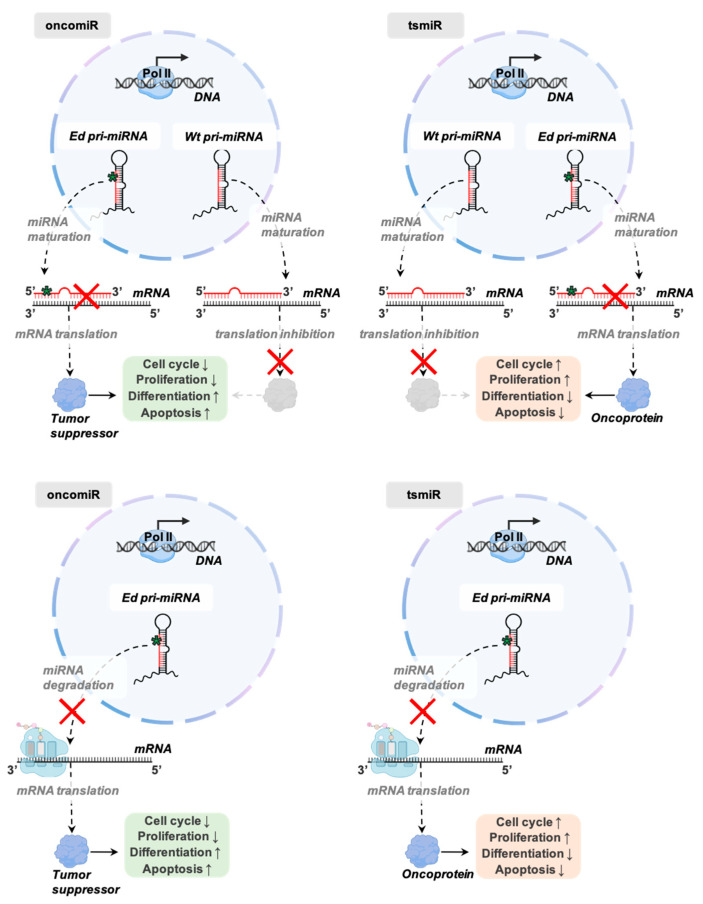Figure 4.
Possible effects of miRNA editing in the context of cancer. Editing of mature miRNAs can prevent the targeting of complementary regions in the 3′UTRs of original mRNAs. In case an editing event disrupts the base pairing of an oncomiR with its target mRNA (transcribed from a tumor suppressor gene), the translational process will lead to the expression of the tumor suppressor protein, increasing processes related to cell cycle arrest, differentiation, and/or apoptosis (top, left). In case an editing event disrupts the base pairing of a tsmiR with its target mRNA (transcribed from a proto-oncogene), the translational process will lead to the expression of the oncoprotein, increasing processes related to cell cycle progression, proliferation, and migration (top, right). However, editing of pri- or pre-miRNAs can cause the blockage of their biogenesis, significantly decreasing the expression of their related mature miRNAs. Thus, similar considerations can be done in the case of the underexpressed miRNA functions as an oncomiR (bottom, left) or a tsmiR (bottom, right).

